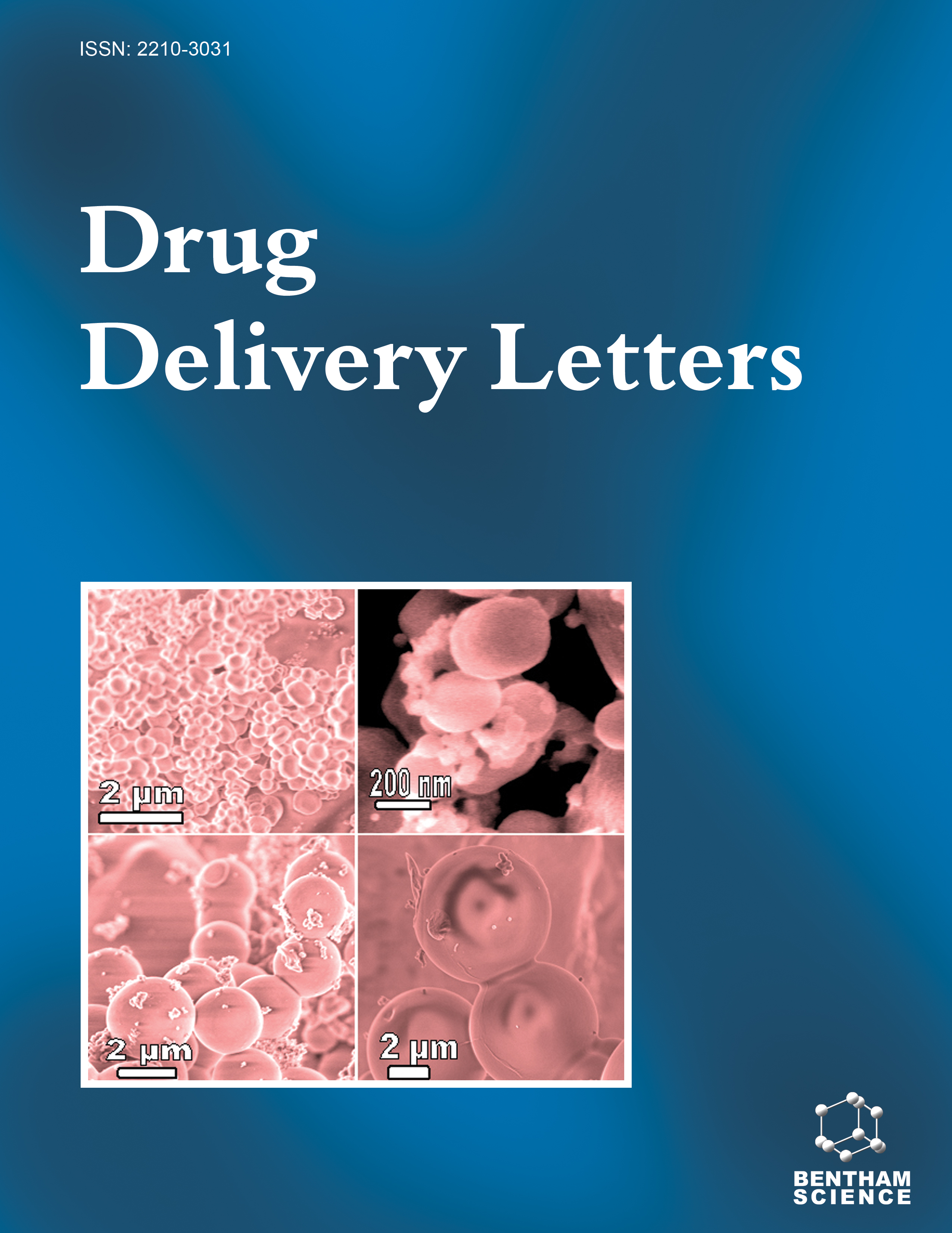- Home
- A-Z Publications
- Drug Delivery Letters
- Previous Issues
- Volume 13, Issue 3, 2023
Drug Delivery Letters - Volume 13, Issue 3, 2023
Volume 13, Issue 3, 2023
-
-
Treating Sensorineural Hearing Loss: Recent Advances in Inner Ear Drug Delivery
More LessThis review aims to provide historical, present, and future drug deliveries for treating inner ear disorders. Systemic delivery, such as antibiotics and steroids for the inner ear, was the basis on which current drug delivery systems and devices have been researched and developed. Researchers and clinicians had to develop and deliver drugs locally due to adverse effects caused by drugs systemically. Intratympanic method of ant Read More
-
-
-
Proniosomes for Oral Delivery of Aceclofenac: Impact of Paddle Versus Dialysis Methods on In vitro-in vivo Correlation (IVIVC) Predictions
More LessAuthors: Rana M. F. Sammour, Samah H. Almurisi, Muhammad Taher and Aliasgar ShahiwalaBackground: This study aims to assess the suitability of in vitro drug release methods, dialysis and paddle methods for predicting in vivo behaviour of Aceclofenac (ACE) proniosomes. Methods: ACE proniosomes are prepared using different carriers: glucose, maltodextrin and mannitol by the slurry method. The release studies of ACE proniosomes formulations were performed using the paddle, and dialysis methods while in viv Read More
-
-
-
Development and In-vitro Evaluation of Dexamethasone Enriched Nanoemulsion for Ophthalmic Indication
More LessAuthors: Ajinkya Jadhav, Sagar Salave, Dhwani Rana and Derajram BenivalBackground: Dexamethasone (DEX) is a glucocorticosteroid used in the treatment of steroid-responsive inflammatory conditions of the eye. The currently marketed formulations pose several issues, like poor drug residence time, resulting in frequent administration of the formulation, making them less effective. Objective: The present study aims to provide comprehensive data encompassing the designing, optimization, develo Read More
-
-
-
Nanostructured Lipid Carrier of Cinacalcet HCl: Formulation, BBD Enabled Optimization, Pharmacokinetic and In-Vitro Cytotoxicity Study
More LessBackground: Cinacalcet hydrochloride (CINH) is a BCS class IV drug. It is mainly used for the treatment of chronic renal disease and parathyroid cancer. It exhibits poor oral bioavailability of less than 25%. Objectives: The main objective is to improve the bioavailability of CINH by formulating the nanostructure lipid carrier (NLC). Methods: In this research, glyceryl monostearate (GMS), labrasol, and tween 20 were the main exc Read More
-
-
-
Formulation, Optimization, and In vitro Characterization of Cilnidipineloaded Self-emulsifying Drug Delivery System
More LessAuthors: Renu Kadian and Arun NandaAim: The goal of this research was to formulate and optimize a cost-effective selfemulsifying drug delivery system (SEDDS) of cilnidipine to increase its dissolution rate. Cilnidipine is a BCS class II active pharmaceutical ingredient, which limits its use. Methods: Cilnidipine's solubility in various oils, surfactants, and cosurfactants, has been investigated. To determine if there is any interaction between cilnidipine and certain excipients, Read More
-
-
-
Effects of Anti-Sclerostin Antibody Release from Porous Microparticles on Bone Resorption Inhibition of Osteoblasts
More LessBackground: Anti-sclerostin antibodies are among the most efficient drugs for the treatment of osteoporosis, and have been also expected for the treatment of local bone disorders. We have previously developed porous microparticles of hydroxyapatite and chondroitin sulfate loading anti-sclerostin antibodies formulated with zinc cations. However, the biological behavior and concentration dependence of anti-sclerostin anti Read More
-
Volumes & issues
Most Read This Month
Article
content/journals/ddl
Journal
10
5
false
en


